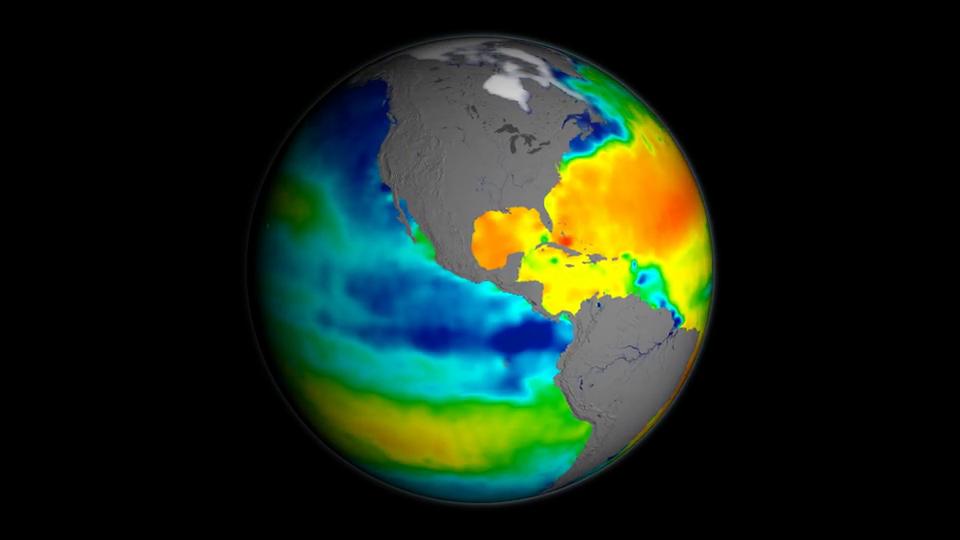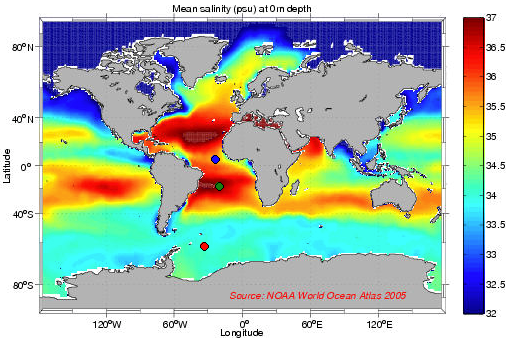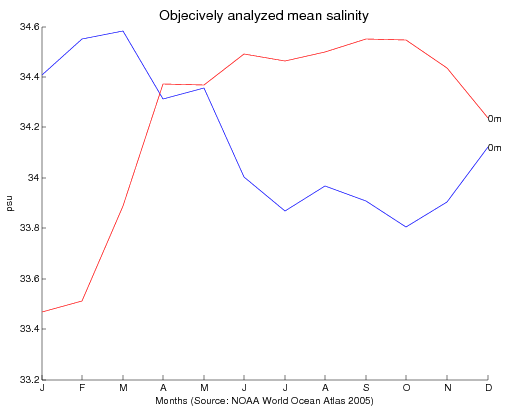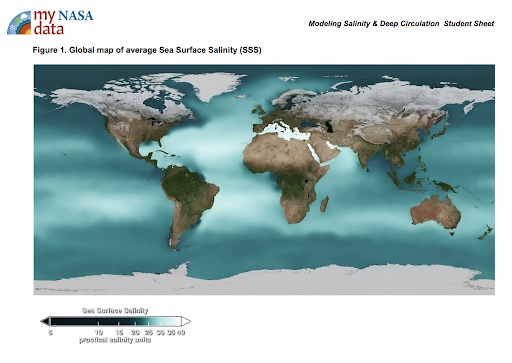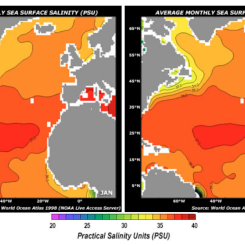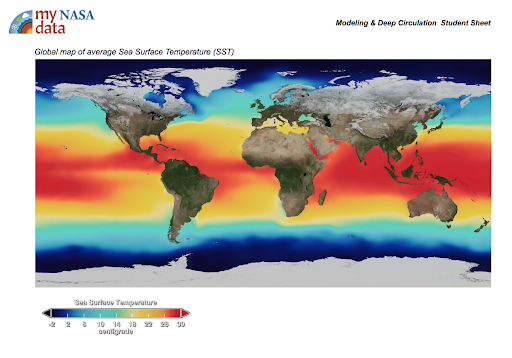Mini Lesson/Activity
Ocean Surface Salinity Data Analysis
Overview
Exploring salinity patterns is a great way to better understand the relationships between the water cycle, ocean circulation, and climate. In this mini lesson, students analyze sea surface salinity mapped plots created from the Earth System Data Explorer, paired with questions (and answers) from the Aquarius Mission. Credit: Aquarius Education
Student Directions
Sea surface salinity describes the amount of salt in the water at the ocean surface. Any process that adds freshwater to the ocean surface decreases ocean salinity. Examples of these freshwater processes include precipitation, sea ice melt, and river input. Meanwhile, evaporation of seawater increases salinity.
In deep ocean waters, there are currents that are controlled by water density, which depends on the temperature and salinity of the water. Colder, saline water masses are more dense and sink; while warmer, fresher water masses are less dense and rise.
UNITS: Salinity is measured in practical salinity units (psu). These units are equivalent to grams per kilogram, which in this case is 1 gram of dissolved salt per 1 kg of water.
Steps:
1. Explore the sea surface salinity mapped plot for April 2019.
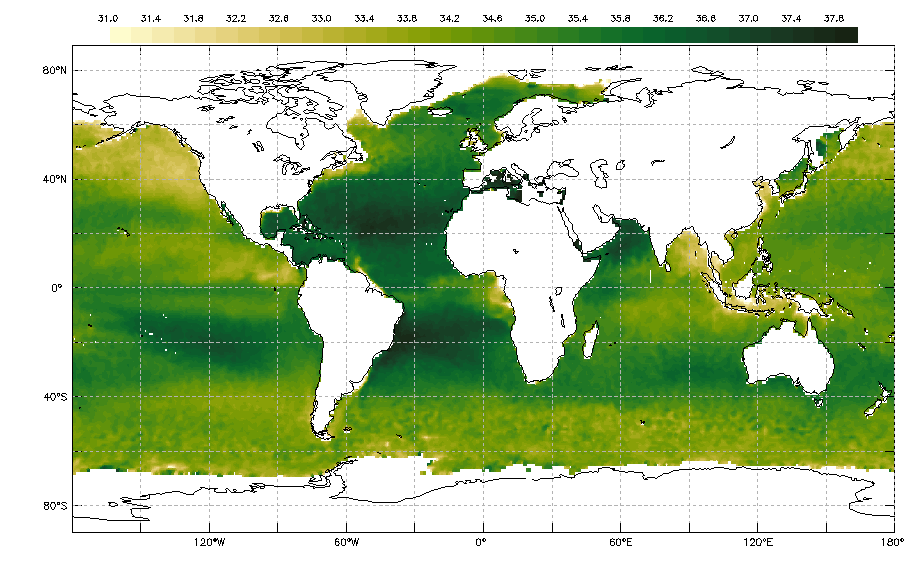
Credit: NASA SMAP
https://mynasadata.larc.nasa.gov/sites/default/files/inline-images/Sea%20Surface%20Salinity%20April%202019.png
2. Answer the following questions. Check with your instructor on how to submit your answers.
- Is salinity uniform throughout the ocean?
- What is the range of ocean surface salinity in Earth's ocean?
- Which latitudes have the saltiest waters in the Atlantic, Indian, and Pacific?
- Where, in general, are the freshest surface waters?
Teacher Note
Teachers, these mini lessons/student activities are perfect "warm up" tasks that can be used as a hook, bell ringer, exit slip, etc. They take less than a class period to complete. Learn more on the "My NASA Data What are Mini Lessons?" page.
Teachers who are interested in receiving the answer key, please complete the Teacher Key Request and Verification Form. We verify that requestors are teachers prior to sending access to the answer keys as we’ve had many students try to pass as teachers to gain access.
Disciplinary Core Ideas:
- ESS2A: Earth Materials and Systems
- ESS2C: The Role of Water in Earth’s Surface Processes
Crosscutting Concepts:
- Patterns
- Scale, Proportion, and Quantity
Science and Engineering Practices:
- Developing and Using Models
- Analyzing and Interpreting Data

